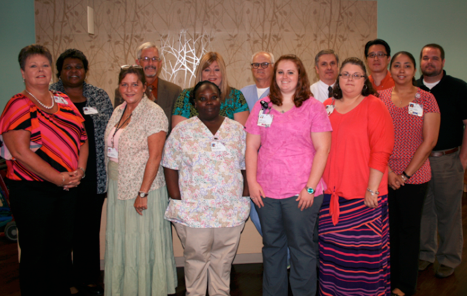Written by Laurie Blount, Director of Medical Device Integration, Iatric Systems

Whenever I present an educational session about medical device integration, I always try to highlight the importance of close collaboration between Nursing/Clinical Informatics, Information Technology, and Biomedical Engineering. Good communication is the true key to successful medical device connectivity.
Communication inside the hospital
Recently I had the pleasure of working with the folks at Halifax Regional Medical Center in Roanoke Rapids, North Carolina.
The hospital’s Nursing division requested that its Welch Allyn and Nihon Kohden patient monitors be interfaced with the hospital’s MEDITECH Client/Server EHR. The leaders at Halifax embraced the idea of “close collaboration” and brought together the right people to make this project happen.
The hospital’s Biomedical Engineer, Clinical Informatics staff, Nursing, and IT Network Administrators all worked together with us and the device manufacturers as one cohesive team toward our common goal.
As a result, medical device connectivity is now a reality at Halifax, and clinicians’ workflow processes have improved dramatically. Check out their story here. They’re improving patient outcomes and increasing patient satisfaction. And clinicians verify vital signs right at the bedside on their low-acuity Welch Allyn devices.
{{cta('02e4e540-227b-4d5b-ab3b-f914d6c0ab7c','justifycenter')}}
Communication outside the hospital
Good communication within the hospital is key, of course, but good communication between your medical device manufacturer(s) and the medical device integration vendor you choose is critical to the success of your project, too. During the sales process, if a medical device manufacturer you’re evaluating or an integration vendor you’re considering tells you their solution is “plug and play,” you should seriously scrutinize this statement and consider moving on to the next vendor on the list, unless the vendor is prepared to answer all of your questions and concerns pertaining to scope, workflow supported, and resource expectations and requirements.
There are inevitably challenges in every medical device connectivity project. Even when industry standards and protocols are used, a problem could lie within a device itself, or there could be a wireless network issue, or maybe someone doesn’t have the proper permissions set up. There are many possible culprits to prevent data from getting from point A to point B.
It’s paramount that people focus on collaboration and refrain from pointing fingers when (not if) these challenges surface. Welch Allyn, Nihon Kohden, and Iatric Systems have excellent working relationships. I’m confident the folks at Halifax will attest to that fact if you contact them to inquire.
Part of a family
Below is a great picture of all of the people at Halifax Regional who were involved in our medical device connectivity project in some way, and who feel like family now.

Back Row: Belinda Bradley, Clinical Analyst; Robert Gordon, Director of Information Systems; Sheryl Watson, RN, Clinical Informatics Supervisor; Roger St. Louis, RN; Tom Johnson, Biomedical Engineer; Chris Chang, Network Administrator; Daniel Bennett, Network Administrator
Front Row: Gwen Davis, BSN RN, Manager of Clinical Informatics; Donna McKibbon, Clinical Interface Analyst; Tawanna Mitchell, NAII; Kaylin White, NA; Jennifer Limer, RN, Clinical Informatics; Shaletha Johnson, BSN RN, Clinical Informatics